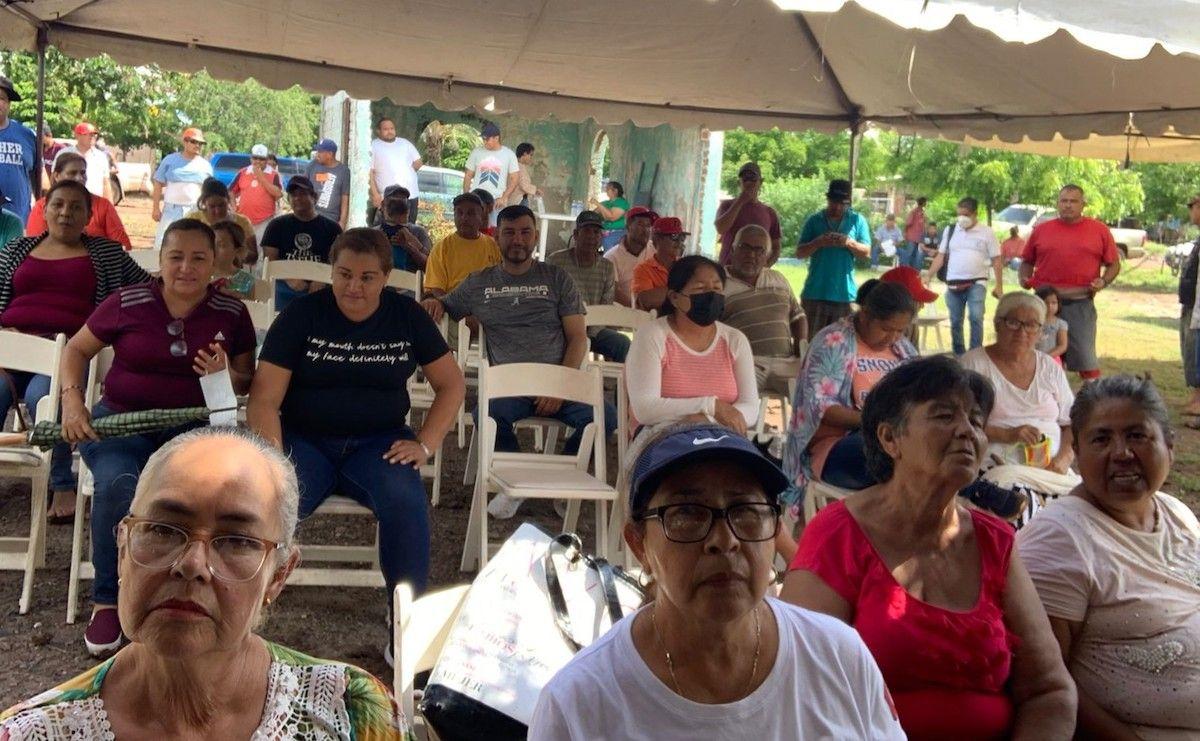The communities dissatisfied with the project for the installation of an ammonia plant in Topolobampo, Sinaloa, will give their verdict in September as part of the Indigenous Consultation process, which they accessed through amparos. However, they denounce that, in their opinion, it is a simulation.
Claudia Quintero Sandoval, indigenous leader of the Ohuira community, said that officials from the Ministry of Environment and Natural Resources (Semarnat) have provided the dissatisfied with incomplete and biased information in favor of the project.
“We know in advance that (the consultation) is not prior, free and informed; nor is it in good faith. Much less in good faith, because it's totally biased, it's totally rigged,” he said.
This Consultation stems from the call, published on June 17 by the Government of Mexico in the Official Gazette of the Federation, to seek a community decision regarding the project for the production of fertilizers, promoted by the company Gas and Petrochemistry of the West.
The consultation was divided into two parts. On the one hand, an open deadline was reported for the Ohuira, Lázaro Cárdenas and Paredones communities, in the Ahome municipality, who accessed this right through judicial remedies decided by the Supreme Court of Justice of the Nation (SCJN), in files 497/2021 and 498/2021.
On the other hand, it was extended to 12 indigenous communities settled in the municipalities of Ahome, El Fuerte and Guasave, because they are located within the area of influence of the project.
The process began at the end of June and ended on July 11. Most of these communities, 11 out of 12, spoke out in favor of installing the plant, as confirmed by President Andrés Manuel López Obrador during his morning conference on July 14.
Quintero Sandoval accuses that these are towns located more than 20 kilometers from the area and that they do not depend on Ohuira Bay, where the plant is intended to be built.
With regard to disgruntled communities, for which the date was left open in the call, the information phase of the consultation began on August 21 in the town of Lázaro Cárdenas; and the last one will be held on September 3 in Paredones.
The relief of the consultative phase, where people from the community will speak out regarding the project, begins on September 4 and ends on the 18th.
In the first phase, the plant is planned to produce 2,200 tons per day of anhydrous ammonia, a basic input for fertilizer production.
In the second phase, it is intended to install another plant to double production, while in the third phase, methanol is expected to be generated.
This project was authorized by the Secretariat of Environment and Natural Resources in April 2014, despite the refusal of the Northeast and Upper Gulf of California Regional Directorate of the National Commission for Protected Natural Areas (Conanp).
In addition, in September 2018, Semarnat granted a conditional authorization to the company for the construction of a port terminal in the area.
During the information meeting held last August 21 in the town of Lázaro Cárdenas, in the face of community reproach, staff from the General Directorate of Environmental Impact and Risk (DGIRA) acknowledged that there were irregularities in the authorizations granted by Semarnat.
“In fact, these authorizations were carried out irregularly and for that reason they were granted protection and therefore we are carrying out the consultation,” said Alejandro Mario Olivera, of the DGIRA, as recorded in the minutes of the consultation.
The SCJN protected the right of indigenous communities to be consulted, as established in Convention 169 of the International Labour Organization (ILO). Therefore, he ordered Semarnat to reinstate that process.
However, the indigenous leader assured that Semarnat seeks only to comply with the sentence and close the consultation process.
Diana Escobedo Urías, a researcher at the National Polytechnic Institute in Sinaloa, who carries out coastal pollution studies in the Ohuira Lagoon, pointed out that the available scientific information was not taken into account for the information consultation and they limited themselves to providing only the data provided by the company in the Environmental Impact Statement (MIA) document.
Based on the results of the consultation, Semarnat should re-evaluate the MIA.
While the company points out that it is a viable and sustainable project; according to Escobedo Arias, there are several risks associated with the construction of the project, such as ending artisanal fishing in the Ohuira lagoon or the possible dispersion of ammonia in the environment, which would impact the health of surrounding populations.



Comentarios (0)